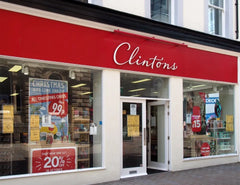The Art of Logo Placement on Shirts: Balancing Style and Brand Identity
Table of Contents
- Key Highlights
- Introduction
- Why Logo Placement Matters
- T-Shirt Logo Placement Options
- Key Considerations in Logo Placement
- Real-World Examples of Effective Logo Placement
- Conclusion
- FAQ
Key Highlights
- Understanding Logo Placement: Strategic placement of logos on shirts enhances brand visibility and impression.
- Various Placement Options: Common locations include left chest, center chest, full chest, upper back, and sleeves, each serving different branding purposes.
- Printing Methods Matter: Choosing the right printing method—screen printing, embroidery, or direct-to-garment—is crucial for design fidelity and production efficiency.
- Image Resolution Guidelines: High-resolution images are essential for high-quality prints, with 300 dpi being standard.
- Case Studies: Examples from brands illustrate the impact of thoughtful logo placement on customer perception and brand recognition.
Introduction
When it comes to fashion and branding, the old adage "location, location, location" holds true. Consider this: A striking logo on a shirt can be the difference between being noticed or overlooked. Research shows that 68% of people can remember a brand they’ve seen on a shirt—this statistic underscores the significance of where you place your logo. For businesses, organizations, and individuals aiming for visibility, effective logo placement transforms a simple fabric tee into a walking advertisement.
This article explores how to navigate the intricacies of t-shirt logo placement—an art form that combines aesthetic appeal with effective branding. From printing methods and design considerations to common placement styles, we'll dive into the factors that influence how your logo is perceived in public.
Why Logo Placement Matters
The placement of a logo on a shirt is not just a design choice; it carries implications for brand identity and visibility. It can convey professionalism, style, and brand messaging, making it critical to understand the subtleties of logo dynamics. According to a 2022 study by the National Institute for Branding, brands utilizing optimized logo placement saw a 20% increase in brand recall among consumers.
The Psychology of Placement
The human eye naturally gravitates towards certain areas on clothing. A logo on the left chest feels more professional and classic, resonating with formal brands. In contrast, a central logo commands attention, ideal for more casual or trendy styles.
Importance of Branding Consistency
Consistency in logo placement is essential across all merchandise to build recognition and reinforce brand messaging. Consider how major brands like Nike place their iconic swoosh consistently across various products, making it synonymous with athletic wear.
T-Shirt Logo Placement Options
1. Left Chest
The left chest is a traditional placement often associated with professionalism and understated branding. This location is ideal for smaller logos or monograms, giving them a classic warmth without overwhelming the design.
- Size Recommendation: 2.5 inches by 2.5 inches to 5 inches by 5 inches.
- Placement Guidelines: Place logo 3 to 4 inches below the collar and restrict it from extending past the armpit.
- Best For: Simple graphics or logos, ideal for corporate merchandise.
2. Center Chest
Center chest logos are bold and highly visible, making them a popular choice for casual wear.
- Size Recommendation: 6 inches by 6 inches to 10 inches by 10 inches.
- Placement Guidelines: Align anchor point directly to the center, positioning 3 to 5 inches below the collar.
- Best For: Clean lines and moderate detail; effective for event tees where visibility is key.
3. Full Chest
Full chest logos offer maximum space for design elaboration, perfect for showcasing intricate artwork.
- Size Recommendation: 12 inches by 12 inches to 16 inches by 16 inches.
- Placement Guidelines: Align the anchor point in the middle; start placement 3 to 4 inches beneath the collar.
- Best For: Larger designs or text-based logos that need significant impact.
4. Upper Back (small)
A subtle upper back print can complement other designs on the front, offering a unique branding angle.
- Size Recommendation: 1 inch by 1 inch to 3 inches by 3 inches.
- Placement Guidelines: Center the logo about an inch below the collar's edge.
- Best For: Minimalist logos, enhancing shirts with elaborated front designs.
5. Full Back
Full back designs utilize the entire expanse of the garment's rear, making them particularly impactful.
- Size Recommendation: 10 inches by 12 inches to 14 inches by 16 inches.
- Placement Guidelines: Centered, with 3 to 4 inches between the collar and the print's top.
- Best For: Detailed graphics, concert tees, or promotional wear.
6. Sleeves
Sleeve prints are often overlooked but serve as a great way to display logos without crowding the main design.
- Size Recommendation: 1 inch by 1 inch to 4 inches by 4 inches.
- Placement Guidelines: Print falls about 2 inches above the hem.
- Best For: Minimalist logos or small graphics; creating a polished, professional look.
Key Considerations in Logo Placement
Choosing the Right Printing Method
The success of a logo on a t-shirt is heavily influenced by the printing method used. Here are the most common techniques:
-
Screen Printing: Ideal for bulk orders with simple, multi-color designs. Offers durability and vibrant colors.
-
Embroidery: Best suited for small logos on knit garments. Provides a tactile quality that elevates the brand appeal, though it may limit design complexity.
-
Direct-to-Garment (DTG): Perfect for intricate designs, DTG allows for high-resolution prints and is suitable for smaller print runs, though it might not be as durable as screen printing.
Importance of Image Resolution
Image quality is paramount in ensuring the clarity of your printed logo. A high-resolution image of at least 300 dpi will yield the crispest details. If you provide files lacking in resolution, the resulting print may appear blurry or pixelated, adversely affecting your brand’s professionalism.
Understanding Anchor Points and Placement
- Anchor Point: The visual center of your design, which may not always correspond to the geometric center due to asymmetry.
- Location vs. Placement: Location is a broad area (like "left chest"), whereas placement is the specific positioning within that area. Defining these terms clearly with your printing partner can mitigate confusion during production.
Real-World Examples of Effective Logo Placement
Case Study: Nike
Nike’s use of the Swoosh logo demonstrates effective left chest placement, which not only enhances brand identity but also fits seamlessly into athletic apparel culture. The logo's strategic position communicates excellence and performance, reinforcing the brand’s messaging.
Case Study: Coca-Cola
Coca-Cola often utilizes center chest placement in promotional materials. By incorporating their logo prominently in red and white designs, they assure maximum visibility that aligns with their vibrant branding.
Case Study: Local Heroes
Local businesses, such as coffee shops or gyms, can benefit from specific placement strategies that speak to their customer base. A small left chest logo can convey a communal, friendly brand, while a full-front design can be eye-catching for events.
Conclusion
The nuances of logo placement on shirts extend far beyond mere aesthetics; they reflect your brand’s identity and resonate with your target audience. The right placement can elevate a simple t-shirt into a powerful branding tool. Understanding the various options—left chest, center chest, full back—and how they align with your brand’s narrative is vital. Coupled with the right printing technique and image resolution consideration, your logo can effectively capture attention and leave a lasting impression.
FAQ
Where should I put my logo on a shirt?
The best logo placement depends on your brand’s graphic style and the other shirt elements. For a simplistic look, consider the sleeve or back collar for a more detailed design.
How many inches down should a logo be on a shirt?
Typical logos are placed 3 to 5 inches below the collar, with specific placements varying by location, such as center chest or left chest.
Where does a logo sit on a shirt?
Logos can be placed in a range of locations including full chest, upper chest, and sleeves. The ideal position is defined by your design's size and complexity.
What printing method is best for my shirt design?
Choosing the best printing method relies on your design's intricacy and the fabric type. Screen printing is great for bulk orders, while DTG is ideal for colorful and complex designs.
What is the required image resolution for printing?
To ensure high-quality prints, provide your logo in a high-resolution format (at least 300 dpi) to avoid any blurriness in the final product.
By carefully considering these facets of logo placement and printing, you embark on a journey not just to create visually appealing shirts but to enhance your brand's visibility and resonance in a crowded marketplace.
POWER your ecommerce with our weekly insights and updates!
Stay aligned on what's happening in the commerce world
Email Address





